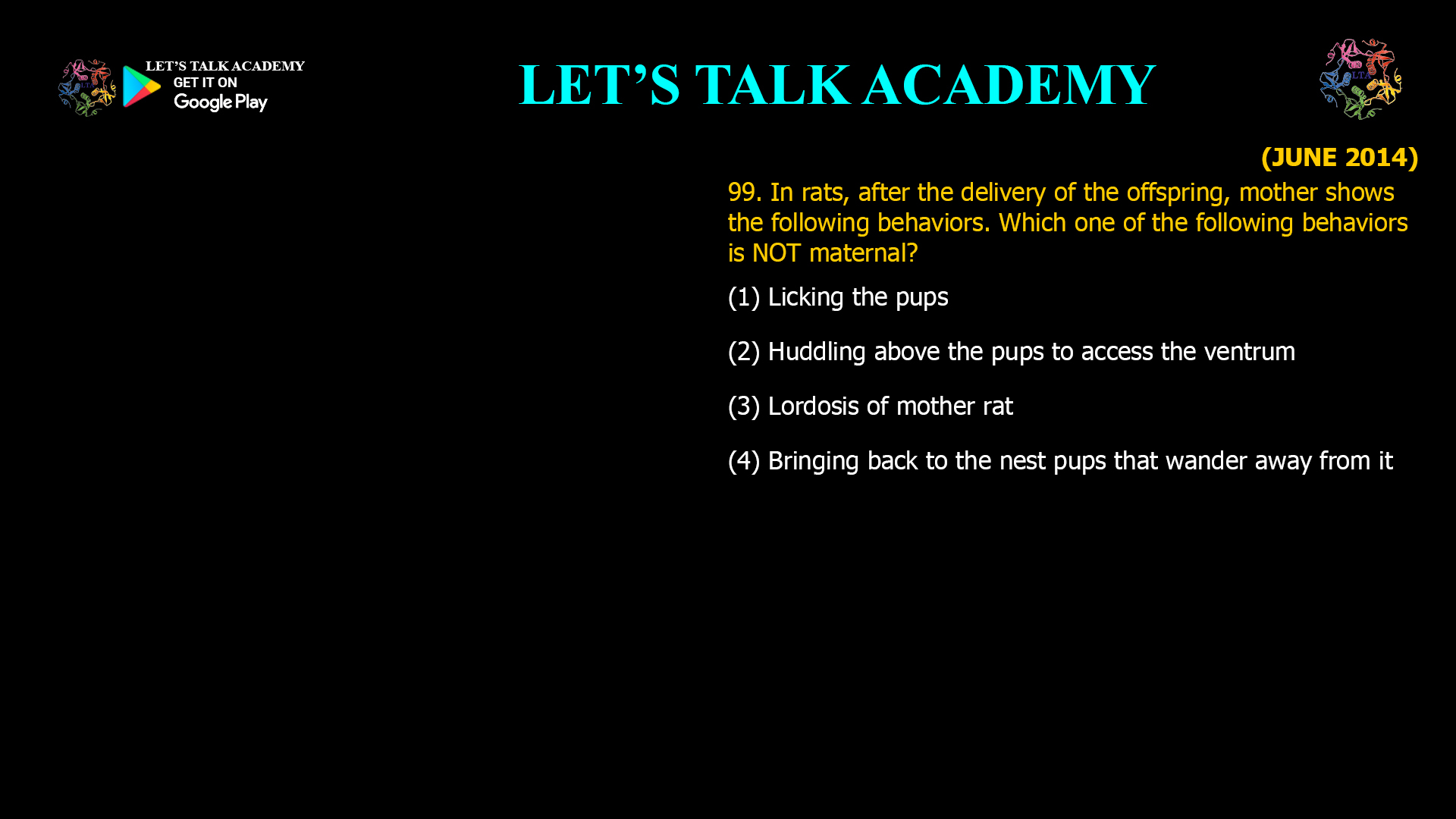- In rats, after the delivery of the offspring, mother shows the following behaviors. Which one of the following behaviors is NOT maternal?
(1) Licking the pups
(2) Huddling above the pups to access the ventrum
(3) Lordosis of mother rat
(4) Bringing back to the nest pups that wander away from itCore Maternal Behaviors in Rats
Following parturition, the mother rat engages in several well-documented maternal behaviors:
-
Licking the Pups: This is a classic maternal action, serving to clean the pups, stimulate their urination and defecation, and promote bonding. It is a key indicator of attentive mothering.
-
Huddling or Crouching Over the Pups: The mother positions herself above the pups, providing warmth and easy access to her ventrum (belly) for nursing. This posture is crucial for effective feeding and thermoregulation.
-
Retrieving Pups to the Nest: If pups wander away, the mother will actively bring them back to the nest. This retrieval behavior helps keep the litter safe and together, and is a hallmark of maternal care.
These actions are essential for the survival and healthy development of the pups and are universally recognized as maternal behaviors in rats.
The Exception: Lordosis
Lordosis is a reflexive posture seen in female rats during mating, characterized by an arched back and elevated hindquarters to facilitate copulation. This behavior is triggered by sexual motivation and hormonal cues, particularly during estrus, and is unrelated to maternal care. While it is possible for postpartum female rats to exhibit lordosis if they enter postpartum estrus (a period shortly after birth when they can become sexually receptive), lordosis itself is not a maternal behavior. It is a sexual behavior, distinct from the nurturing and protective actions that define maternal care in rats.
Why the Distinction Matters
Understanding the difference between maternal and non-maternal behaviors is crucial for researchers studying animal behavior, neurobiology, and the effects of environment or stress on parenting. Maternal behaviors directly impact offspring survival and development, while sexual behaviors like lordosis serve reproductive, not caregiving, functions.
Conclusion
Among the behaviors listed, lordosis of the mother rat is NOT a maternal behavior. The other actions—licking the pups, huddling over them, and retrieving them to the nest—are all key components of rat maternal care after delivery. Recognizing this distinction helps clarify the roles of different behaviors in the remarkable journey of mammalian motherhood.
-




1 Comment
Kajal
October 13, 2025Lordosis